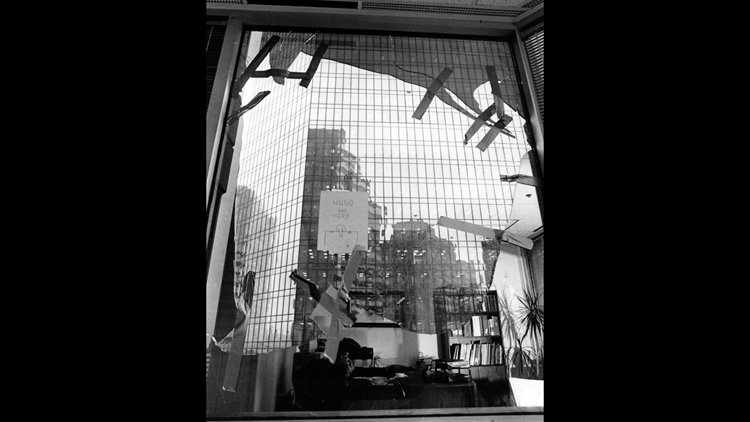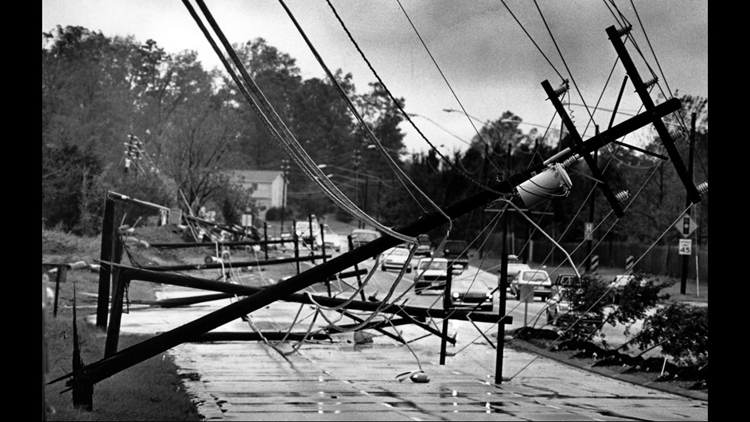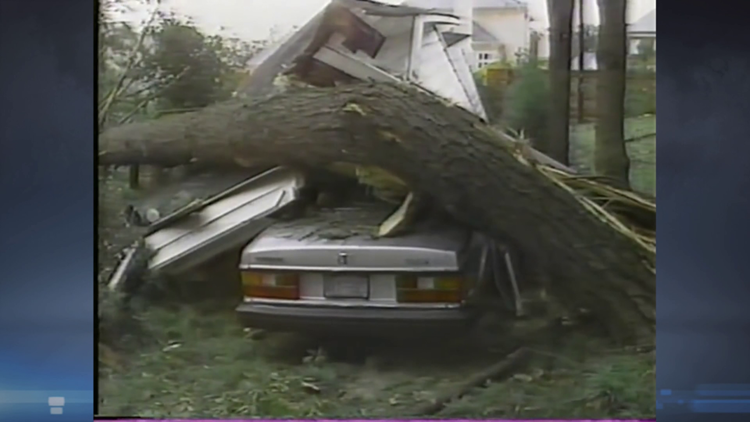Remembering Hurricane Hugo: Charlotte's wake-up call
<p>If you lived in Charlotte in 1989, chances are you have a Hurricane Hugo story.</p>
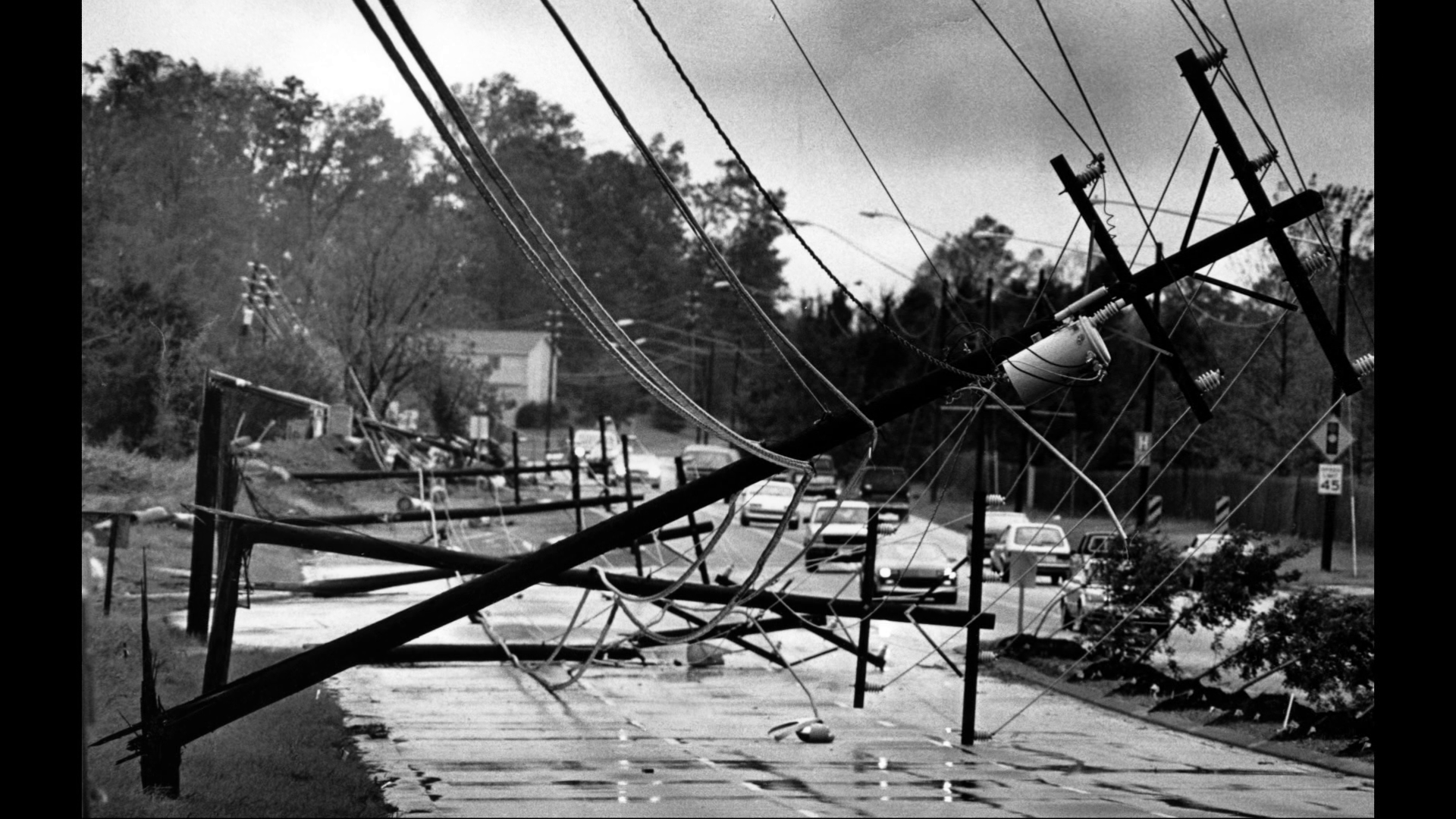
Hugo: The storm that changed Charlotte forever
CHARLOTTE, N.C. – If you lived in Charlotte in 1989, chances are you have a Hurricane Hugo story.
And it probably starts something like this: “We were without electricity for…”
Homes were dark, businesses shut down, and Charlotte was ground to a halt as the storm devastated the Carolinas. Duke Energy’s Robert Combs remembers vividly how he couldn’t even make it to the city that day.
“I remember driving several different routes trying to get to downtown and each route I took, I ran into trees across the roads,” Combs said.
Hurricanes don't come to Charlotte
The night before Hugo was expected to reach Charlotte, forecaster Larry Sprinkle says he was on his way home when his instincts told him to check on the status of the storm.
"I told our other meteorologist, 'everything about this feels eerie,'" Sprinkle said. "So, I decided I was going to stay at the station."
After the storm made landfall near Charleston, South Carolina, it began to work its way inland. This immediately raised the level of concern for Sprinkle.
"Hurricanes don't come this far inland," he said. "They don't come to Charlotte. Well, they hadn't until then."
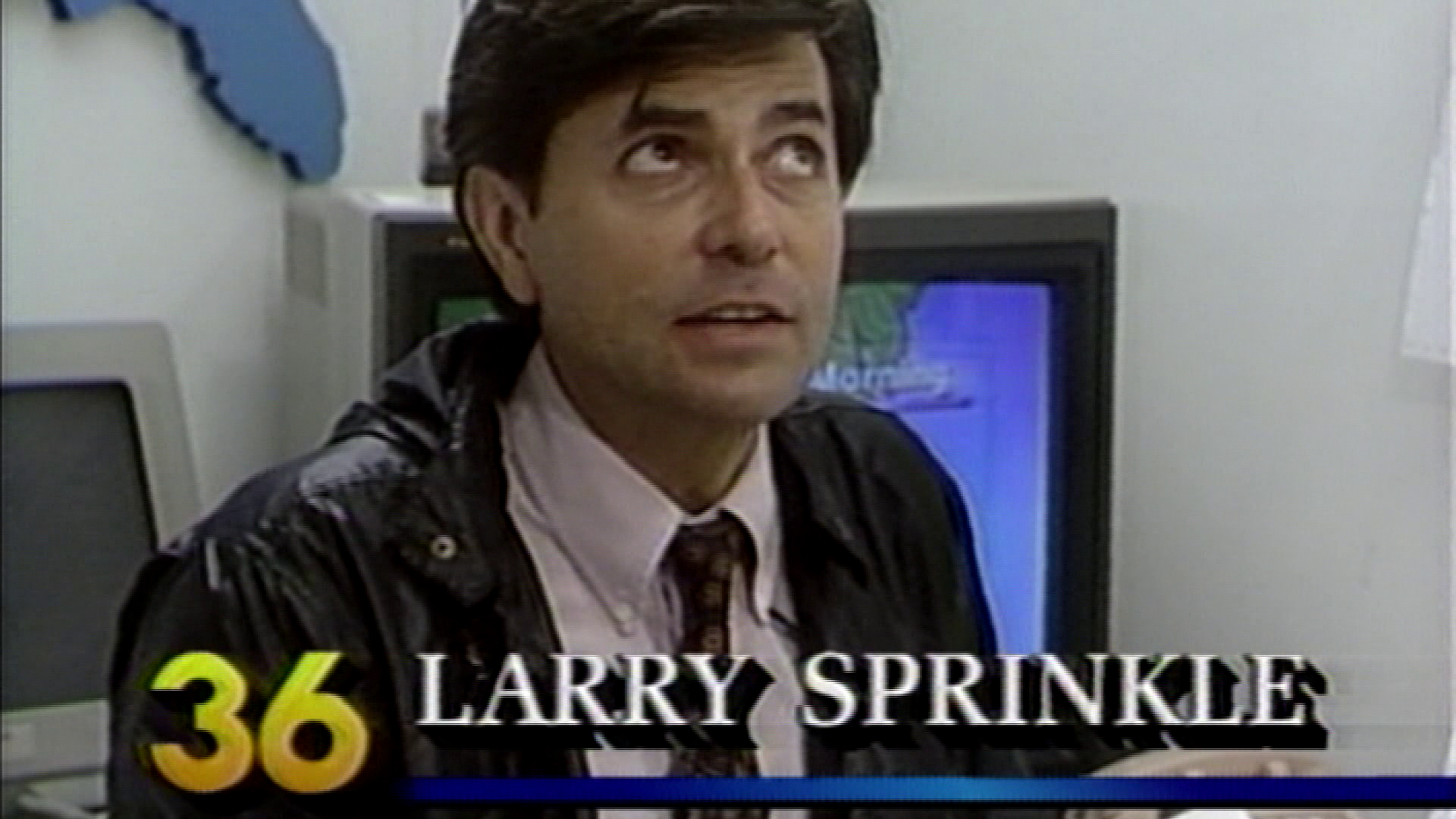
Sprinkle recalls being on the air as the storm battered Charlotte when a huge chunk of the ceiling collapsed.
“This was probably a 500-pound chunk of ceiling material that fell 10, maybe 15 feet away from me,” recalled Sprinkle, who crawled on his hands and knees from the studio after the collapse. “Our anchor at the time, Rick Jackson, said, ‘we’ll come back to Larry in a moment,’ but there was a just an empty chair!”
Hugo's wake of destruction
“This was a once-in-a-lifetime event,” Sprinkle said. “I remember doing weather segments outside and you could hear trees falling in the woods outside the station. You could see the bright blue flash of transformers exploding, then you’d just see darkness as the power went out down the street.”

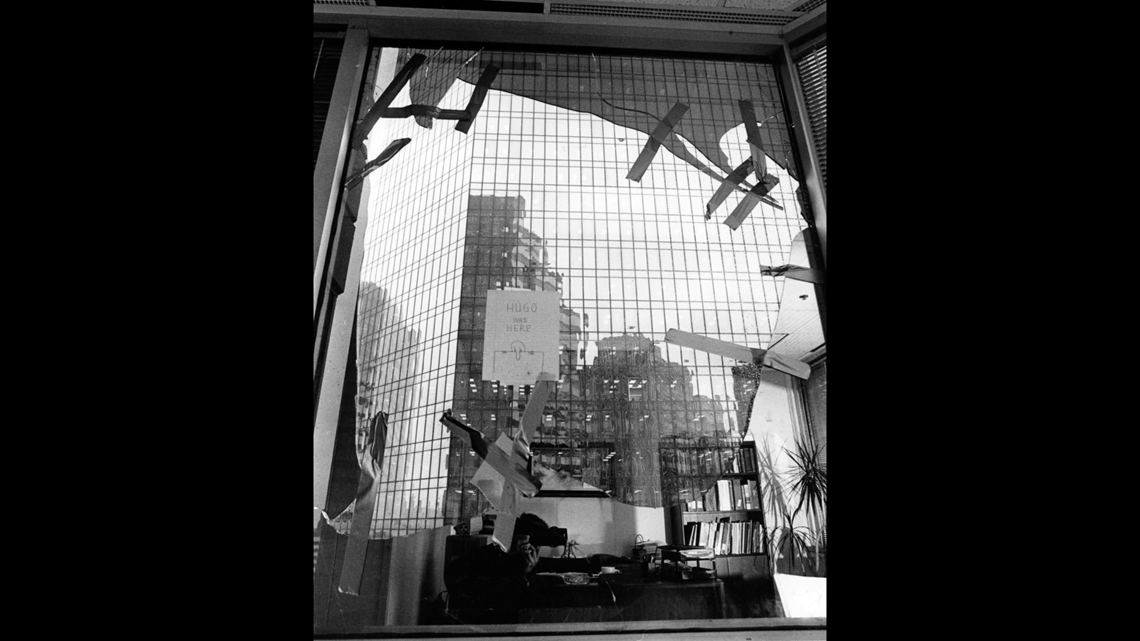
The storm smashed windows in many of uptown's skyscrapers and even destroyed some buildings. According to the Hurricane Severity Index, Hugo was the second-worst storm in modern history after making landfall as a Category Four monster with wind speeds well over 130 mph.
As the storm made its way through the Charlotte metro, average wind speeds were still in the Category 1 range with gusts up to 90 mph.
After the storm passed, Combs traveled around to assess the damage, which was catastrophic. Billions of dollars in damage was done, with Hugo destroying 80,000 trees in one fell swoop. The storm is also reported to have claimed the lives of 37 people in the Carolinas.

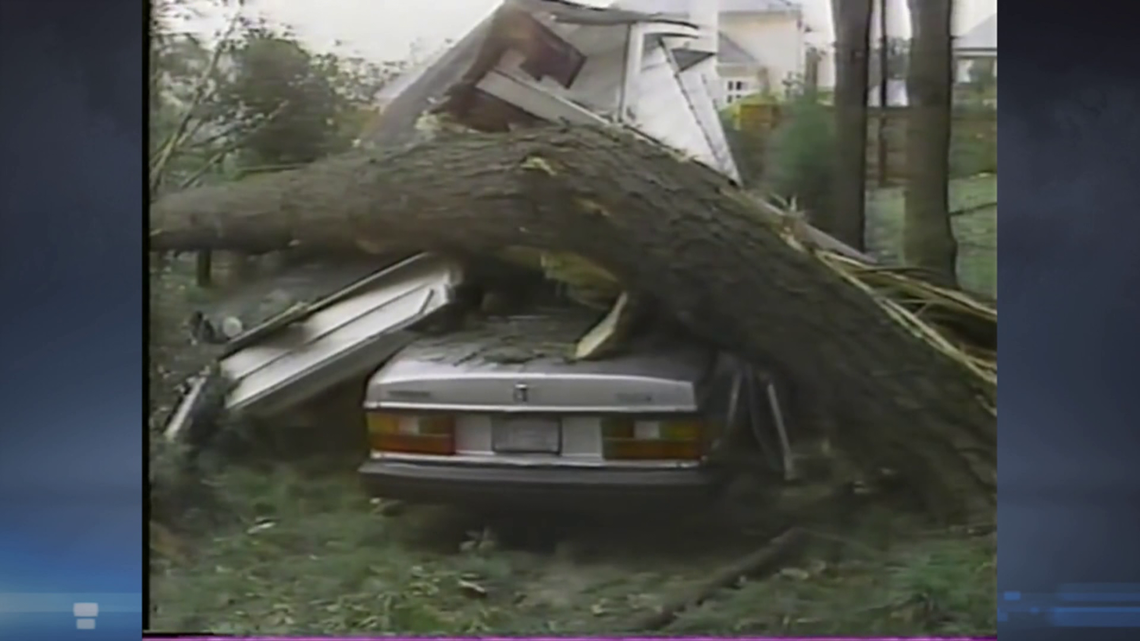
“Piles and piles of debris where homeowners had been trying to clear out their yards,” Combs said. “And a lot of the things that were really interesting to me were that neighbors were really helping neighbors.”
Crews worked for weeks to remove the debris directly caused by Hugo.
Hugo's lasting legacy
In 1985, Charlotte's tree canopy covered 55-percent of the area. Today, it's down to just 45-percent, thanks in large part to a direct hit from a massive hurricane almost 28 years ago.
Combs recalls that people were happy to see Duke’s crews, knowing power would soon be restored and the fallen trees removed. But for some, that was a long time coming.
“You could not see any lights on, it was just dark,” Combs said. “And if you were out at night, your whole entire neighborhood was dark, (and) that was a week later.”
Hugo was a wake-up call for Charlotte, and now Duke Energy uses the storm as a benchmark to prepare for incoming storms. Duke meteorologist Nick Keener uses forecasts to predict how they will impact Duke’s infrastructure by correlating wind speeds with the resulting damage.
PHOTOS | Hugo devastates the Carolinas
“Now, we have data, and we can say a storm like this will cause this type of damage and it’ll require this amount of resource response,” Keener explained.
So for Duke Energy, Hugo ended up being a huge learning experience. Now, the company applies those lessons every time Mother Nature flexes her muscles.



